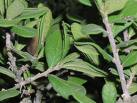Mexican Persimmon Tree Information
Images of Mexican Persimmon:






Mexican Persimmon grows in the following 3 states and provinces:
Colorado, Maine, TexasInformation about Mexican Persimmon:
The Diospyros Texana is commonly known as the Mexican Persimmon as well as Texas Persimmon.
The currently accepted scientific name for Texas persimmon is Diospyros texana Scheele (Ebenaceae) . There are no currently accepted infrataxa.Texas persimmon is endemic to southern and central Texas and northern Mexico. In Texas, it occurs in the Rio Grande Plains, Edwards Plateau, and the southeastern corner of the Trans-Pecos region. In Mexico, Texas persimmon occurs in the northern portions of Neuvo Leon, Coahuila, and Tamaulipas . It may also occur in the extreme northeastern corner of Chihuahua .Texas persimmon is a common component in many mature riparian and woody upland communities . On floodplain terraces Texas persimmon is a characteristic component of riparian forests which are dominated or codominated by live oak (Quercus virginiana), netleaf hackberry (Celtis reticulata), sugarberry (C. laevigata), pecan (Carya illinoensis), cedar-elm (Ulmus crassifolia), western soapberry (Sapindus saponaria var. drummondii), great leucaena (Leucaena pulverulenta), and ash (Fraxinus spp.) . Associate understory species include granjeno (Celtis pallida), huisache (Acacia farnesiana), and lime pricklyash (Zanthoxylum fagara) . In the Cedar Breaks region of the Edwards Plateau, Texas persimmon occurs in scrub evergreen forests with Ashe juniper (Juniperus ashei), mescalbean sophora (Sophora secundiflora), and Texas live oak (Quercus virginiana var. fusiformis) . In invading thorn woodlands on former grassland sites, Texas persimmon occurs with Texas prickly pear (Opuntia lindheimeri), lime pricklyash, granjeno, lotebush (Condalia obovata), agarito (Mahonia trifoliolata), and blackbrush acacia (Acacia rigidula) . On the Rio Grande Plains, Texas persimmon occurs in a honey mesquite (Prosopis glandulosa var. glandulosa)-mixed brush shrubland community and in a honey mesquite/bristlegrass (Setaria spp.)/forb woodland . Texas persimmon may become codominant in the netleaf hackberry-huisache association and the honey mesquite-granjeno association .Some of the information provided here is attributed to:Carey, Jennifer H. 1994. Diospyros texana. In: Fire Effects Information System, [Online]. U.S. Department of Agriculture, Forest Service, Rocky Mountain Research Station, Fire Sciences Laboratory (Producer). , available at the USDA Fire Effects Information System (FEIS) website